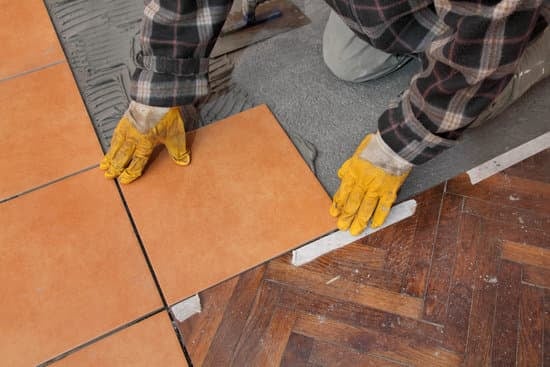Are you constantly asking yourself, “How do I improve my wifi signal at home?” A strong wifi signal is essential for smooth internet connectivity, especially with the increasing reliance on digital devices for work, education, and entertainment. In this article, we will explore various strategies to help you enhance your wifi signal at home and ensure a seamless online experience.
A weak wifi signal can lead to slow internet speed, buffering during video streaming, and dropped connections, causing frustration and inconvenience. Understanding the importance of a reliable and strong wifi signal is the first step towards improving your overall internet experience. Whether you work from home, enjoy streaming your favorite shows, or rely on a stable connection for online gaming, having a strong wifi signal is crucial for uninterrupted use of your devices.
In the following sections, we will discuss how to check the strength of your current wifi signal and identify areas for improvement. We will also provide tips on optimizing the placement of your router, exploring options for upgrading your router, utilizing wifi extenders or boosters, eliminating interference sources, and leveraging advanced settings on your router.
Additionally, we will cover future-proofing strategies to ensure that your wifi network remains robust as technology continues to evolve. By implementing these solutions, you can enjoy a stronger and more reliable wifi signal at home.
Assessing Your Current Wifi Signal Strength
One of the first steps in improving your wifi signal at home is to assess the current strength of your signal. This will help you understand whether you have a weak or strong signal, and what areas need improvement. There are several ways to check your wifi signal strength.
Most routers come with built-in signal strength indicators that can be accessed through the router’s settings. Alternatively, you can use a wifi analyzer app on your smartphone or tablet to measure the strength of your wifi signal in different areas of your home.
Another method for assessing your wifi signal strength is to simply walk around your home and observe the performance of your wireless devices in different areas. If you notice slow internet speeds, buffering while streaming videos, or frequent disconnections in certain parts of your home, it’s likely that those areas have a weak wifi signal. Identifying these dead zones will help you determine where improvements are needed.
It’s also important to consider the speed of your internet connection when assessing your wifi signal strength. A fast internet connection paired with a weak wifi signal can still result in poor performance. Use an online speed test tool to measure the upload and download speeds provided by your internet service provider (ISP). This will give you a better understanding of how well your wifi network is delivering the available bandwidth to your devices.
| Method | Description |
|---|---|
| Built-in router indicator | Access through router settings |
| Wifi analyzer app | Measure strength in different areas |
| Observe device performance | Identify slow speeds and dead zones |
| Speed test tool | Measure upload and download speeds from ISP |
Finding the Right Spot for Your Router
When it comes to improving your wifi signal at home, one of the most crucial factors to consider is the placement of your router. Finding the right spot for your router can significantly impact the strength and stability of your wifi connection. To optimize the placement of your wifi router, there are a few tips to keep in mind.
First and foremost, it’s important to position your router in a central location within your home. This allows for a more evenly distributed coverage area, minimizing potential dead zones where the wifi signal may be weak or unstable. Additionally, placing the router at an elevated position, such as on a high shelf or mounted on a wall, can help improve its overall reach and performance.
Furthermore, it’s important to consider any potential sources of interference when determining the placement of your router. Keep the router away from other electronic devices, as well as obstructions like walls or large furniture that may obstruct the signal. By minimizing interference and obstacles, you can ensure that your wifi signal is able to travel more effectively throughout your home.
Upgrading Your Router
Assessing Your Current Router
Before considering an upgrade, it’s important to assess your current router. Determine its age, the wifi standards it supports (such as 802.11n or 802.11ac), and whether it can handle the number of devices connected to it. If you consistently experience dead zones or slow speeds in certain areas of your home, it may be time for an upgrade.
Considering a Dual-Band or Tri-Band Router
One option for improving your wifi signal is upgrading to a dual-band or tri-band router. Dual-band routers operate on both the 2.4GHz and 5GHz frequencies, offering better performance and less interference in crowded areas. Tri-band routers add an additional 5GHz band, making them ideal for homes with many connected devices and high bandwidth needs.
Exploring Mesh Wifi Systems
Another option to consider is a mesh wifi system. This type of system uses multiple access points placed throughout your home to create a single, seamless network. Mesh systems can provide excellent coverage in larger homes and eliminate dead zones by spreading the wifi signal more evenly.
Overall, upgrading your router is a great way to improve your wifi signal at home. Whether you opt for a traditional replacement with a newer model or invest in a mesh system for comprehensive coverage, choosing the right option can lead to significant improvements in your internet connection quality and speed.
Using Wifi Extenders or Boosters
Wifi extenders and boosters are devices designed to improve the coverage and strength of your wifi signal. These devices work by receiving the existing wifi signal, amplifying it, and then transmitting the boosted signal to areas with poor coverage. This can be particularly useful in larger homes or buildings where the wifi signal may struggle to reach all areas effectively.
When considering wifi extenders or boosters, there are a few different options to choose from:
– **Wifi Extenders:** These devices simply pick up the existing wifi signal and rebroadcast it, extending the coverage to areas that were previously out of range.
– **Powerline Adapters:** Powerline adapters use your home’s electrical wiring to transmit data. By plugging one unit into an outlet near your router and another unit into an outlet in a different part of your home, you can create a wired connection for your extender, offering a more stable and reliable signal.
– **Mesh Wifi Systems:** Mesh systems consist of multiple nodes or access points that work together to provide seamless coverage throughout your home. These systems are typically more expensive but offer advanced features such as seamless roaming and self-healing networks.
Before investing in a wifi extender or booster, it’s important to assess the specific needs of your home and determine which option will best suit your requirements. Additionally, consider factors such as the size of your home, potential sources of interference, and budget constraints when making this decision. By carefully evaluating these factors, you can choose the right device to enhance your wifi signal effectively.
Eliminating Interference
Identifying Interference Sources
When it comes to improving your wifi signal at home, one crucial aspect to consider is interference. Interference can come from various sources such as microwave ovens, cordless phones, baby monitors, neighboring wifi networks, and even certain types of construction materials used in your home.
These sources can significantly weaken your wifi signal and impact the overall performance of your network. One way to identify potential sources of interference is by using a wifi analyzer app that can help you detect the presence of other networks and signal strengths in your area.
Removing Interference
Once you have identified the sources of interference, there are several steps you can take to eliminate or minimize their impact on your wifi signal. One effective method is to relocate electronic devices that could be causing interference away from your router.
For example, placing your router away from crowded areas where multiple devices are using the same frequency can help reduce interference. Additionally, switching to a different wifi channel on your router’s settings may also mitigate interference from nearby networks.
Another way to remove interference is by replacing or upgrading older electronic devices with newer models that operate on different frequencies or use improved technologies with less impact on your wifi signal. Investing in appliances and gadgets that are labeled as “wifi-friendly” or “low-interference” can make a significant difference in reducing unwanted disruptions to your wireless connection.
Implementing Physical Barriers
In some cases, implementing physical barriers between your router and potential sources of interference can help improve your wifi signal strength. This could involve repositioning furniture, installing shelves or partitions, or using specific materials to block or absorb signals that may be causing disruptions. By strategically placing these barriers, you can create a more favorable environment for your wifi network and reduce the impact of external interference.
Using Advanced Settings
Exploring the advanced settings on your router can be a great way to optimize your wifi signal and improve the overall performance of your home network. By delving into these settings, you can make specific adjustments that cater to your unique wifi needs.
Here are some advanced settings to consider exploring on your router:
- Quality of Service (QoS) settings: QoS allows you to prioritize certain types of internet traffic, such as video streaming or online gaming, over others. This can help ensure a smoother experience for activities that require a more stable connection.
- Channel selection: Routers operate on different channels within the wifi spectrum. By choosing the best channel for your environment, you can minimize interference from other devices and improve signal strength.
- Beamforming: If your router supports beamforming technology, enabling this feature can help focus the wifi signal towards your connected devices, potentially improving speed and range.
Additionally, some routers offer user-friendly mobile apps or web interfaces that allow for easy access to these advanced settings. This can make it simple for users to make tweaks and improvements without needing extensive technical knowledge.
By taking advantage of these advanced settings, you can fine-tune your router to better suit your specific needs and maximize the potential of your home wifi network. As technology continues to advance, having a solid understanding of these options will be valuable in ensuring a strong and reliable wifi signal in the future.
Future-Proofing Your Wifi Network
In today’s digital age, a strong wifi signal is essential for seamless connectivity and optimal online experience at home. As technology continues to advance, it’s important to future-proof your wifi network to ensure that you have a reliable and strong signal for years to come. By following the tips and strategies outlined in this article, you can take proactive steps to ensure that your wifi signal remains robust even as technology evolves.
One of the key ways to future-proof your wifi network is by staying informed about the latest developments in wifi technology. As new standards and protocols are introduced, such as the transition from 802.11ac to 802.11ax (Wi-Fi 6), it’s important to evaluate whether your current router is capable of supporting these advancements.
Upgrading to a router that is compatible with the latest standards can help ensure that your wifi network remains competitive in the face of evolving technology.
Additionally, investing in a mesh wifi system can provide scalability and adaptability for your home network. Mesh systems offer the flexibility to expand coverage by adding additional nodes or access points, making it easier to adapt to changes in your home environment or technological advancements. This can be especially beneficial for larger homes or spaces with challenging layouts where a single router may not provide adequate coverage.
Finally, considering professional consultation or installation services can also be a valuable investment for future-proofing your wifi network. Professionals can assess your specific needs, recommend the most suitable equipment, and optimize the placement of routers and access points for maximum coverage and performance. By taking these proactive measures, you can ensure that your home network remains resilient and reliable in the face of advancing technology.
Frequently Asked Questions
How Can I Make My WiFi Signal Stronger in My House?
There are several ways to make your WiFi signal stronger in your house. One option is to reposition your router to a more central location in your home.
Additionally, you can invest in a WiFi range extender or mesh network system to improve coverage throughout the house. Updating your router’s firmware and choosing the optimal channel for your WiFi network can also help enhance signal strength.
Why Is My WiFi Signal So Weak in My House?
A weak WiFi signal in your house can be caused by several factors. It could be due to physical obstructions like walls and furniture, interference from other electronic devices, outdated router hardware, or even distance from the router. Identifying the specific cause of weak WiFi signal is essential in finding an effective solution.
How Do I Fix Poor WiFi at Home?
To fix poor WiFi at home, you can start by conducting a thorough diagnosis of the issue. This may involve checking for any physical obstructions around the router, ensuring that it’s placed in a central location, and minimizing interference from other devices.
Upgrading your router’s hardware or investing in a WiFi extender may also be necessary to improve overall connectivity within your home.

I’m thrilled to have you here as a part of the Remodeling Top community. This is where my journey as an architect and remodeling enthusiast intersects with your passion for transforming houses into dream homes.





